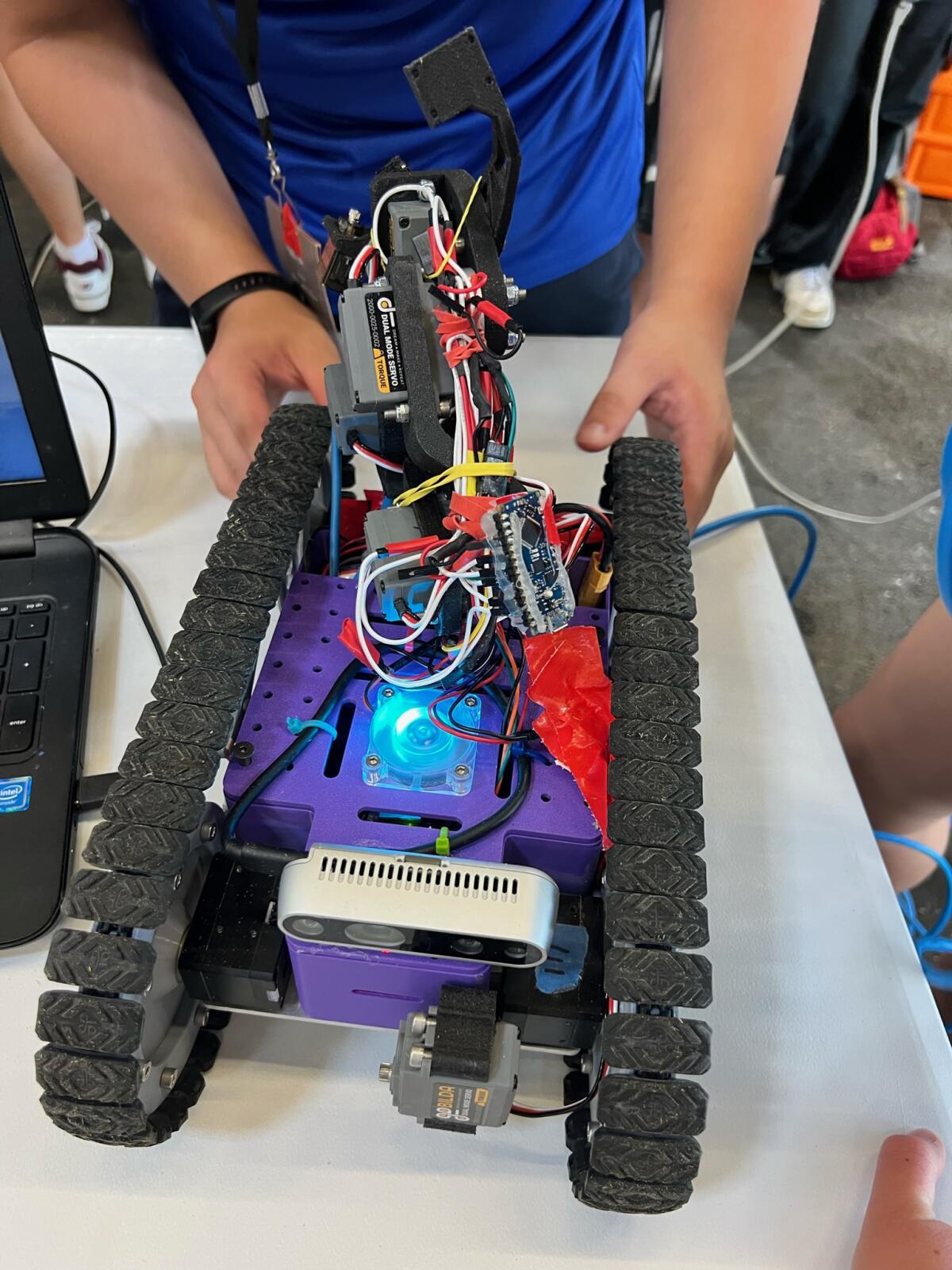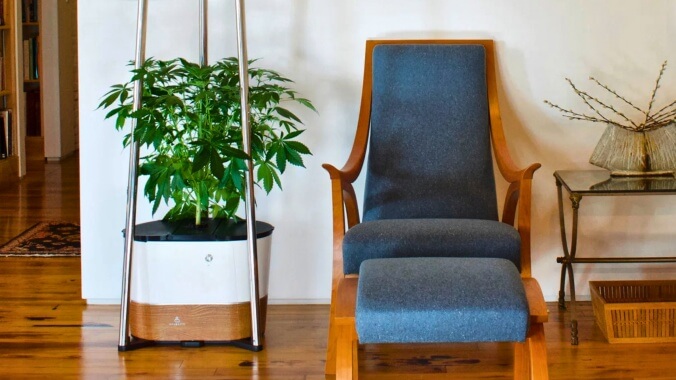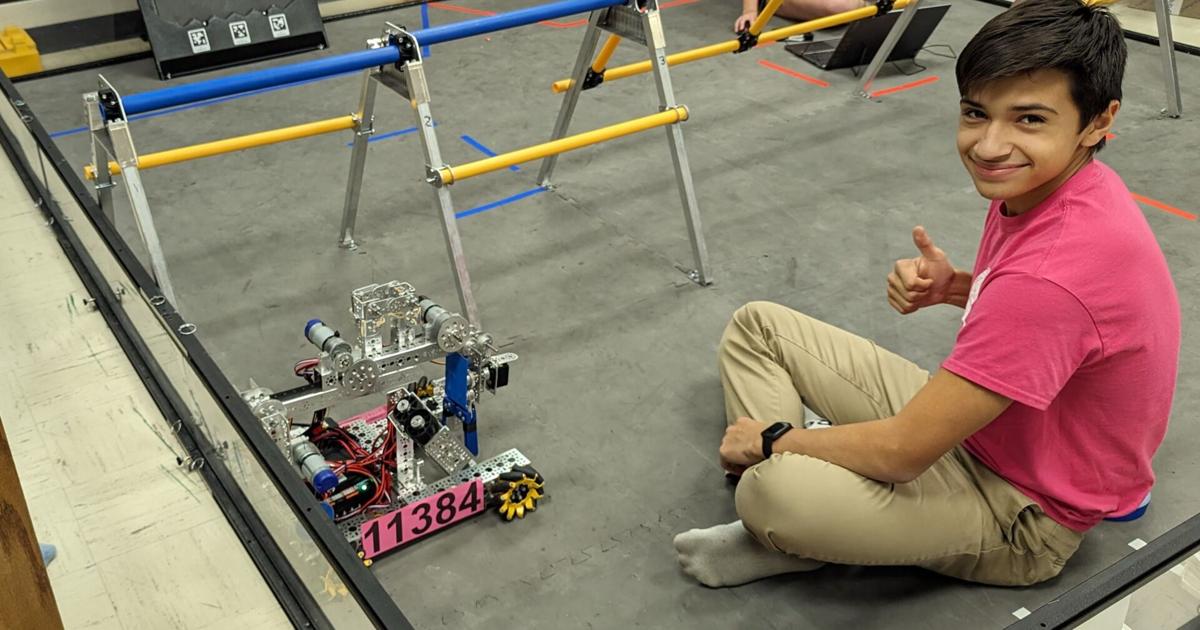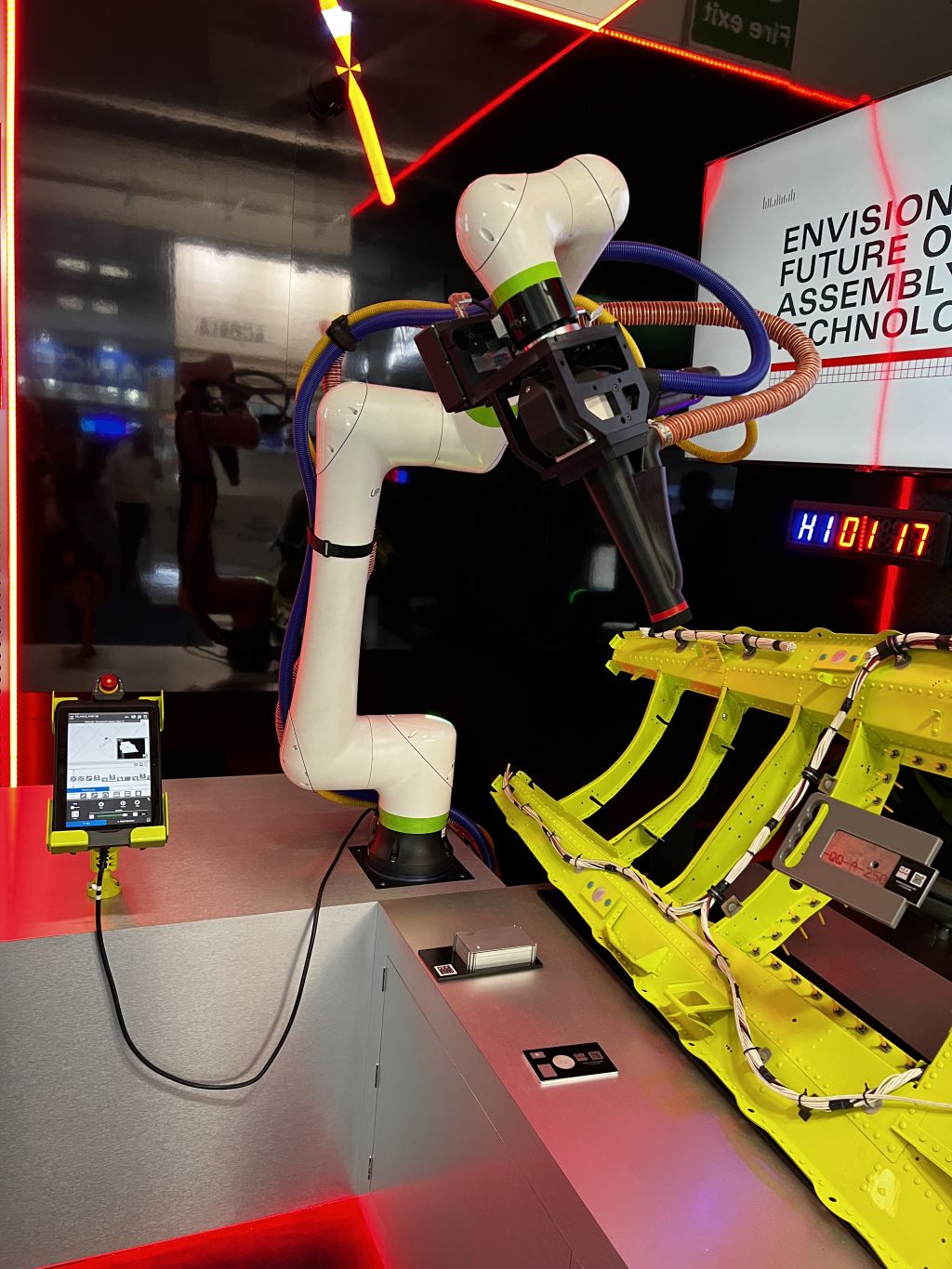Embracing the universal language of robotics, a team of students from The Bishop’s School in La Jolla is putting a summer experience in Bordeaux, France, to use in a drive to get back there next year.
The team, called Knight Sky as a nod to Bishop’s knight mascot, competed against (and in some cases, alongside) other robotics teams from countries including Mexico, Australia, Brazil and more in Robo Cup 23.
The local squad participated in the Rapidly Manufactured Robot Challenge, in which the students were tasked with developing inexpensive robots that could be used in various crises or disasters such as earthquakes, nuclear meltdowns or building collapses. Teams had to design and test robots that could get into small spaces to do things such as open doors, look for survivors and check for damage.
“It is as much a competition against a problem as it is a competition against the other teams,” said Knight Sky faculty advisor Marcus Jaiclin.
Jaiclin was joined by fellow Bishop’s teacher Lani Keller in the July 4-10 excursion to France. The team consisted of Bishop’s students Mia Gover, Millan Kumar, Sienna Li, Audrey Lin and Ryan Zhu.
“It was an event that has a real-life purpose,” Audrey said. “I really liked this event [because] … we took the coding we learned in our computer science classes and took it out of the classroom and applied real applications.”
The Knight Sky robot, she said, was the size of a cereal box and had to navigate terrain such as sand and stairs, read signs that might indicate the type of crisis it is facing, and complete dexterity exercises such as picking up a small object and reach small spaces that a human can’t.
Knight Sky’s robot in the Robo Cup 23 competition was the size of a cereal box and had to complete dexterity exercises such as picking up a small object and reach small spaces that a human can’t.
(Knight Sky)
One challenge in particular was navigating stairs that were deeper than the robot was tall.
“That was something we struggled with,” Audrey said. “But it was really cool to see other teams that had successful arms that helped push them up. … We saw different maneuvers that the robot could do to get over the stairs.”
Another challenge was the potential for grains of sand getting into the gears and jeopardizing the robot.
Jaiclin said the terrain was designed to mimic what the Federal Emergency Management Agency sees in real disasters.
“They have built all these test elements based on FEMA needs,” he said. “So standard test methods have been to determine whether the robot can achieve these methods and therefore be helpful in a disaster response.”
Knight Sky didn’t win, but Audrey said she learned a lot about how the team could improve its designs for next year.
“What I really like about robotics competitions is they are open-source — we can access what other teams have done, we can look at the designs and the code they made,” she said. “So we could look at what other teams have done and what strategies we might want to implement.”
The intent is for the team to continue to participate in the Robo Cup and other robotics competitions in the future.
“I found this team to be very adventurous and creative with their problem-solving path and engage in that trial-and-error process,” Jaiclin said.
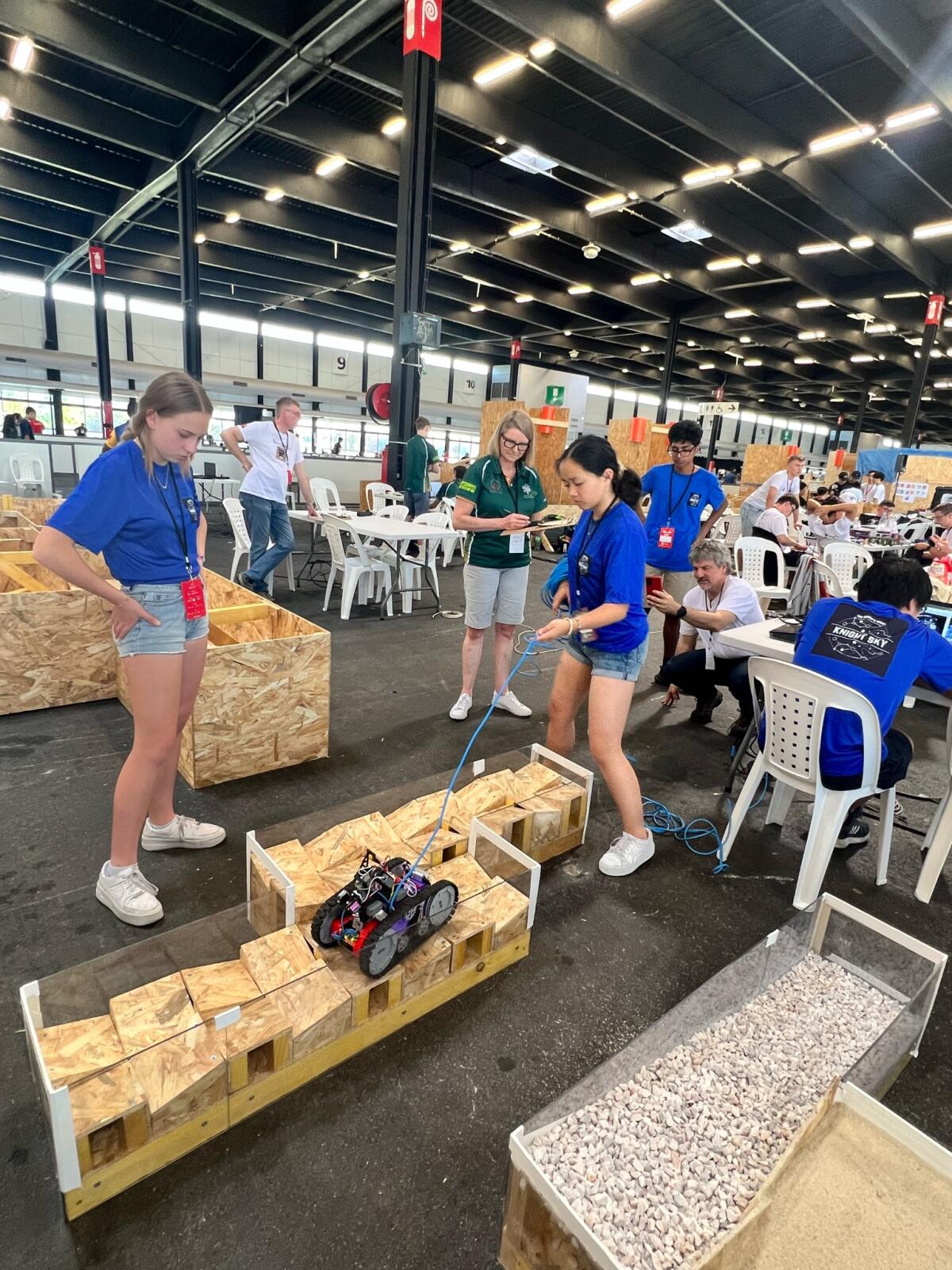
Members of The Bishop’s School’s Knight Sky team test their robot in the Robo Cup competition.
(Knight Sky)
An added bonus was engaging with the international teams as part of the competition.
“I can’t think of any other high school activity that I could say we had dinner with the Brazilian team to talk robots,” Audrey said. “I think that is such a cool experience … to work with people from different countries that are also interested in this and might have a completely different take or unexpected take than what we had.”
She described the event as part competition and part exhibition for the various teams.
“There was a soccer-playing robot and a huge robotic spider on display,” she said. “So walking through the building was so awesome.”
“I think that is such a cool experience … to work with people from different countries that are also interested in this and might have a completely different take or unexpected take than what we had.”
— Audrey Lin, Bishop’s School robotics team member
Audrey has been in robotics since elementary school, largely because she noticed she would be the only girl. “I remember I was the only girl of 40 boys,” she said with a laugh. “I remember there was a boy that didn’t want to partner with me because he didn’t think I’d be a good programmer. But we ended up winning the competition.”
She soon joined First Lego League to participate in competitive robotics and said she enjoyed the building and coding aspects. “I just knew it was something I wanted to do in the future.”
Audrey said the Robo Cup reinforced her love for the growing field.
“There are so many applications that are coming out for robotics,” Jaiclin said. “What I like about Robo Cup is that it is not game-based or simulation-based. It’s not teaching you the skills you will eventually use, it’s actually using the skills because we are doing the real thing. These are robots that could be used in the real world. We’re taking the things we are learning and bringing it to life.”
Once the competition was over, teams were brought together to complete a task, Audrey said. Knight Sky was paired with teams from Hungary and Australia.
“We got to work with other people’s robots — the robots we had been admiring and thinking were so cool over the previous few days,” she said. “We worked together and found innovative solutions we would not have come up with by ourselves.” ◆







